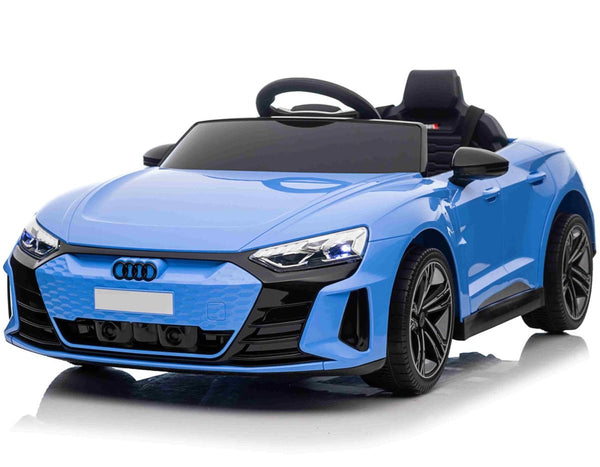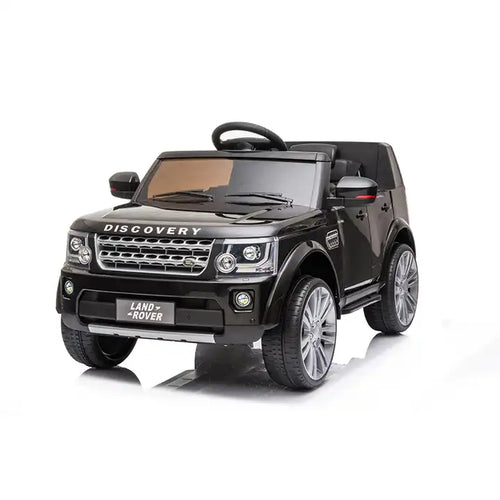Understanding the battery's lifespan and charging times of an electric ride-on kid car is vital to the safety of your children and optimum performance. Here's everything you must know about - Type of battery -
The majority of electric vehicles can be recharged and utilize either lithium-ion or lead-acid batteries. Lithium-ion batteries have a longer lifespan and a faster charging time compared to lead acid batteries.
Capacity of Battery
The capacity of the battery can be measured in either watts-hours, or ampere-hours. The capacity of the battery is crucial since it determines the length of time the ride-on vehicle can run prior to recharging.
Run Time -
The time it takes to run an electric ride-on vehicle refers to the length of time it will run continuously on one charge. The time it takes to run an electric ride-on vehicle is dependent on variables like battery capacity and motor power. It also depends on the terrain as well as the user's weight.
Typical electric ride-on car run times vary from 30 minutes to 2 hours per charge. Nevertheless, high-capacity lithium batteries are able to provide longer run times.
Charging Time
Charging time is the amount of time required to fully recharge the battery after it has been depleted. Charge time may vary based on the battery's capacity, the specifications of the charger and charging method.
The average charging time of electric ride-on vehicles is 8-12 hours. Certain models offer faster charging, especially those that use lithium-ion batteries.
The battery's longevity and safety can be assured by adhering to the manufacturer's charging instructions. Battery performance can be adversely affected when the battery is overcharged or undercharged.
Charging Method
Chargers that charge electric rides are typically plugged into standard household outlets. Certain models have quick-charging capabilities or smart chargers that monitors the state of the battery, and then adjusts charging rates according to the condition.
Check that the charger connector and port can be used with the charger supplied with the ride-on vehicle in order in order to protect the battery or the electrical system.
Batteries for Additional Use
Some ride-on electric vehicles will allow you to buy extra batteries or spares to extend your playtime. If you have additional batteries, you could quickly swap them out for fully-charged ones to reduce the time between repairs.
Understanding the battery's lifespan and the charging time of an electric kids car will ensure your child will enjoy uninterrupted playtime and adventures as they explore their surroundings. It is crucial to recharge the battery as often as is possible and follow the proper charging practices. This will increase battery performance. Have a look at the top Lamborghini kids car for website advice including car electric ride on, two seater childrens electric cars, childs electric ride on car, childrens electric cars, toy the car, two seater childrens electric cars, pedal car, car toy car toy, car electric ride on, two seater childrens electric cars and more. .

What Are The Features Offered By The Ride-On Cars?
Ride-ons are equipped with various features and accessories which make them more realistic. They also provide children with a fun driving experience. Here are some common features included in ride-on car accessories:
Many cars that ride on have working headlights to illuminate the road ahead. This enhances real-world realism and visibility, especially in areas that have low lighting or at night.
Horn Sounds
Ride-on cars usually have an horn button, or a steering wheel that sounds horns when it's pressed. It allows children to let others know they're there and make it appear as if they're driving real vehicle.
MP3 Player compatible -
Some ride-on car models have been designed to be MP3 compatible, which allows youngsters to connect their mobile music device using USB port or an auxiliary input. They can listen to their music while driving, increasing the entertainment value of the ride-on vehicle.
Realistic Engine Noises -
Ride-ons could have built-in music that mimic real-life sounds such as engine sounds, revving or acceleration. Children may feel like they're driving a real vehicle.
Remote Control -
Some ride-on cars have the ability for parents to use a controller, which allows the parents to supervise and control their child's car from a distance. Parents can control the car remotely and control the speed, or even stop the car. This ensures safety and peace-of-mind.
Seat Belts
Some ride-ons are equipped with safety harnesses, or seat belts, which hold the child securely in the right position. This is a protection measure to prevent the child from falling during play.
Working Doors
Certain cars with ride-ons have functional doors that can be shut and opened which allows children to enter and exit the car easily and enhancing the authenticity of the driving experience.
Storage Compartment
Some of the ride-on cars have the option of a trunk or storage compartment that children can use to store toys, snacks, or other items, which adds practicality and flexibility to the playing experience.
Adjustable Seats -
Some ride-on cars have adjustable seats, which can be moved forwards or backwards to accommodate different heights of children or to allow extra legroom for children as they increase in height.
Remote Emergency Stop Buttons
Alongside the remote control, a few rides on vehicles also have a remote-controlled emergency stop button. Parents can use this feature to stop their car in case of emergencies or danger.
These features, accessories, and other components add to the overall enjoyment, realism, safety and enjoyment of ride on automobiles. Children are able to imagine and have fun adventures while driving. Have a look at the top read this about kids cars for site tips including ride a toy, electric rideons, toy ride, toy car toy car, electric ride on, ride electric car, car toy toy, electric two seater cars, electric rideons, electric toy car and more. .

What Remote Control Options Are There For Kids' Cars? Pros And Pros And
Remote-controlled cars for children, also known as RC cars, are offered in a variety of sizes, styles and prices to suit different budgets and needs. Pros and cons, as well as the sizes and types, as well as the prices of remote-controlled children's vehicles are listed below.
Electric RC Cars – Batterie-powered remote-controlled cars that are suitable for both outdoor and indoor use. They are available in a variety of styles like buggies, trucks and sports cars.
Nitro RC Cars – Gas powered remote controlled cars which provide better performance, but require more maintenance. Electric RC cars are less bulky and less expensive.
Scale Models (Remote-controlled replicas) - These are miniatures of real-life automobiles like airplanes, trucks or automobiles. Scale models are available in different scales, from 1-10 to 1-24. The larger scales provide greater detail and realism.
Sizes -
The sizes of remote-control cars for children range from tiny micro-sized models to larger-scale versions. The size of the vehicle will affect its performance, speed and braking characteristics.
Smaller cars that are light and compact, are ideal for indoor use and also by younger children. The larger models provide more power and durability making them suitable for off-roading and racing.
Prices
The prices of remote control cars for children differ based on factors such as dimensions, features, brands and the build quality.
The cost of small-sized electric RC vehicles range from $20 to $100. However the larger-scale electric and Nitro RC models are available between $100-$500.
Model cars in scale and top-of-the-line hobby RCs can cost anywhere from a few hundred and more than a thousand dollars, based on how detailed and strong they are.
The Pros and Cons of -
Pros -
Children and adults alike will be able to enjoy endless hours of entertainment and fun with remote control cars.
Development of skills The RC car helps children to develop their spatial awareness and hand-eye coordination.
Social Interaction: RC cars are great for social interaction with your family and friends.
Customization – Many RC cars are customizable with aftermarket upgrades components and accessories that improve the performance and appearance.
Cons -
Cost - High-end models with advanced features, such as hobby-grade cars, can be quite expensive.
It can be difficult for children to operate the RC cars initially.
Maintenance – RC vehicles require regular maintenance. This includes cleaning, lubrication as well as occasional repairs and replacements of parts.
Safety Issues - RC car safety could be compromised due to electrical hazards, collisions, and other dangers in the event that the vehicles aren't used with caution and supervision by an adult.
Overall, remote controlled children's cars provide an exciting and educational experience for children of all ages, but it's essential to consider factors such as the size, price, features, and safety when selecting the best model for your child. For older kids, hobby grade RC cars may be a better choice. However, simpler models could be a good option for younger children. View the top rated Mercedes ride on car kidscars.co.uk news for more advice including ride on toy, ride on digger, ride ons, riding digger, toy car for car, childrens digger, ride a toy, electric two seater cars, childs ride on car, race car toy car and more. .
